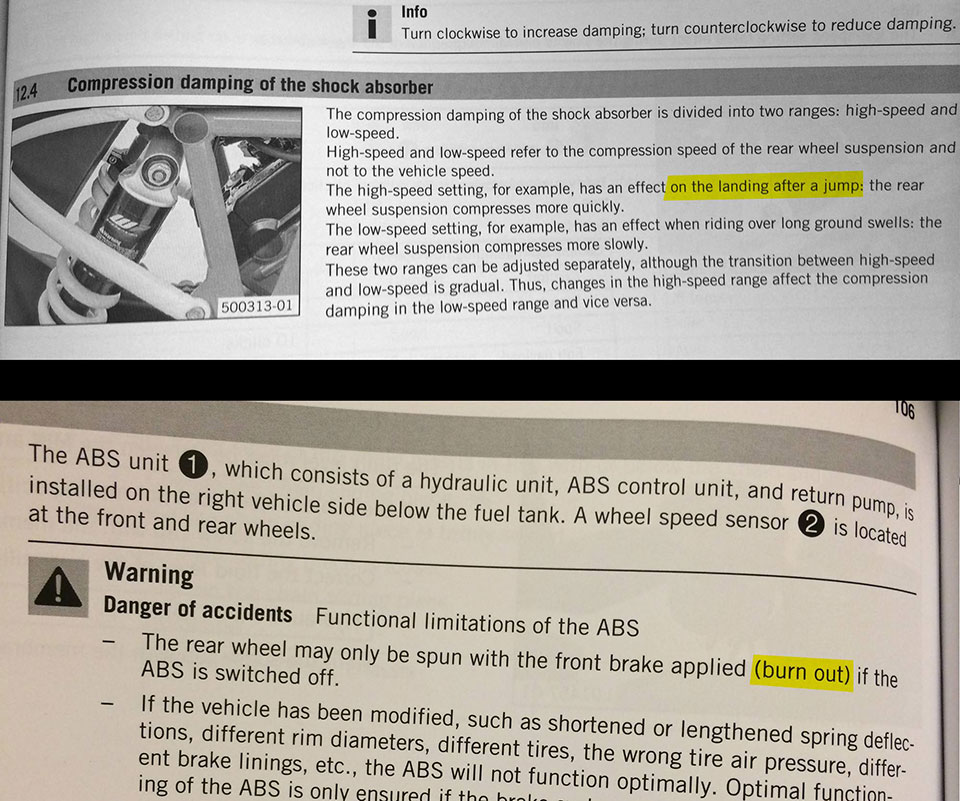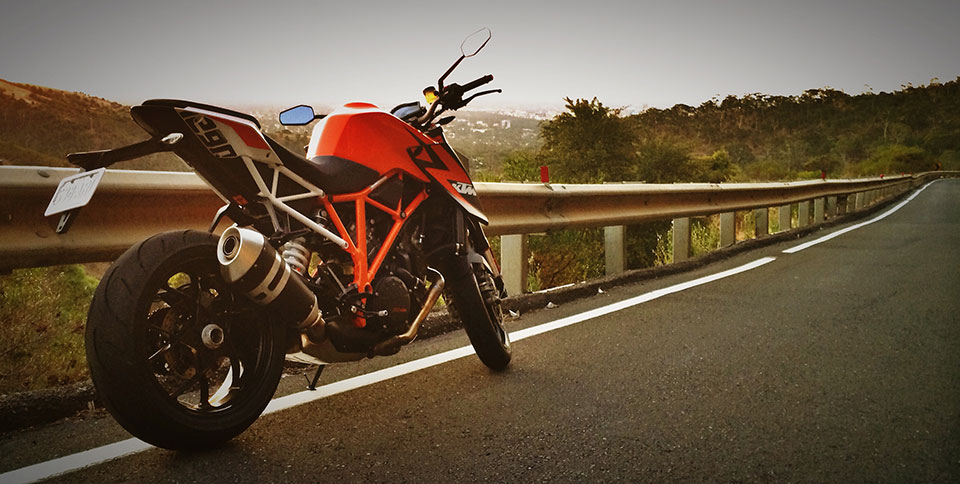Road Racer Jon Falzon recently took delivery of a shiny new KTM 1290 Superduke R so we asked him for his first impressions of KTM’s new weapon.

Purchasing the Superduke R was a big gamble for me. The bike was not even in Australia before I was required to put my deposit down on the $24,500 machine so I really purchased it based on that impressive promotional video they released last year and the specs they announced more recently.
My previous motorbike, a 2008 Yamaha FZ1, I had owned for four years and was always of the vocal opinion that nothing could ever replace it. So much so, that I registered it for a full year with no intention of buying a new bike just three days before putting a deposit down on the Superduke and advertising the FZ1.
For me, the Superduke had a lot to live up to. The FZ1 was an unbelievable bike and would take something completely new to the motorbike scene to trump it. The claimed specs of the Superduke was the selling item with a near one to one power to weight ratio (180HP and 189kg) and a seemingly impossible 144NM of torque. The overall look of the bike was an added bonus.
Sitting on the Superduke, the first thing you notice is the weight… or lack of it. The introduction of a dry sump has allowed KTM to mount the engine very low in the frame which gives the rider the illusion that the bike is much lighter than it is.
My first ride on the 1290 was incredible. I was blown away. The instantaneous torque, which is available at even the lowest RPM, is aggressive and endless. It makes you wonder what will give way first, your grip on the handlebars, or your shoulder from its socket. Those who have ridden the Ducati Diavel or Yamaha Vmax will be able to relate. What I did notice, is that under heavy acceleration, the traction control (with integrated wheelie control) was kicking in quite frequently to keep the front wheel on the ground and seemed to really be limiting the bikes potential.
Thankfully, KTM gives the ability to turn traction control off completely which is exactly what I did and the bike was transformed. Instantly, the power curve was much smoother. From a standstill the Superduke roars off the line lifting up easily before the change into second gear. It was only later that I was informed the rear wheel was spinning the whole way, even while the front wheel was in the air.
KTM are not turning a blind eye to what this bike will be used for either as their instruction manual practically states how to circumvent the ABS to do a stand-still burnout. They even give instructions on how to set up the rear suspension to handle “landing a jump”.

The Superduke is supplied with world-class WP Suspension and Brembo brakes on both ends. Not only do these additions look great on the bike (Even the car industry can respect a set of Brembo callipers) but they provide truly incredible cornering and braking ability. The thin V-Twin engine allows for a lean angle that I doubt I will ever reach, although the tyres feel like they would handle it. Due to the bikes low centre of gravity, it can be thrown through the twisty roads effortlessly, however, when rolling the throttle on mid-corner, the power does grab quite aggressively. At full lean I would hope that the traction control system is concentrating and ready to save me. I haven’t been game enough to test this yet, but all in good time.
Being a “first impression” review, I have only completed a few hundred kilometres and therefore, the ECU is still restricting power to preserve the engine. Currently, KTM have been unable to confirm to me how the engine is actually restricted but I suspect the ECU is only opening the throttle valve part way from 6000RPM onwards (When the shift light starts blinking).
Although I have a few years of race experience, my true experience lies on the street where motorbikes have been my only form of transport since I turned 16, eight years ago. I will admit, it is difficult to ride this bike as a responsible road rider. The sheer thought of how much power you are holding in your right hand is always on the back of your mind. But using some serious self-control, I went for a leisurely commute to work in reasonably heavy traffic (for Adelaide’s standards anyway) and was pleasantly surprised with how well the Duke can adapt to a completely different riding style. It doesn’t make you look like a teenager learning to drive a manual car bunny hopping down the road as I have found some V-Twins tend to do when trying to hold a constant, low speed. Instead it is smooth and predictable. The bike also remained surprisingly cool sitting in traffic, despite the 42°C Adelaide heat.

One flaw I see in the Superduke so far is in the traction control system with integrated wheelie control. I can understand that this is a great safety feature and could really keep you out of trouble, but the system seems a little unrefined to me. The 1290 has been described by many as a “wheelie machine” and that it is, but with a bike that so readily lifts up the front wheel, it does not seem right to have a system that is constantly fighting against what the engine was built to produce. In my opinion, the traction control should be allowing for the wheel to lift a foot off the ground before it intervenes rather than immediately. Of course this can all be solved by turning traction control off as mentioned earlier, however, traction control is automatically enabled again each time the ignition is turned on which means you must then go through the dash settings to disable again. This may not be an issue for other riders, but I have found myself taking the time to disable the traction control before each ride. Hopefully the ‘Sport’ setting of the traction control system is liberated after the first 1000km service.
Even with my limited time on the Superduke, it is immediately obvious that it is the first of a new era of super-naked bikes. Throwing the bike between the corners makes you think you’re on a 600, but then you open the throttle and the 1301cc is immediately evident. The bike as a package is just brilliant. Huge amounts of torque keep things fun on the road, while the power, suspension and brakes gives me confidence that it would give some of the other more race-breed machines a run for their money on the track. I will report back when the engine management systems allow the machine’s top end power off the leash after the odometer clicks over 1000km.
























